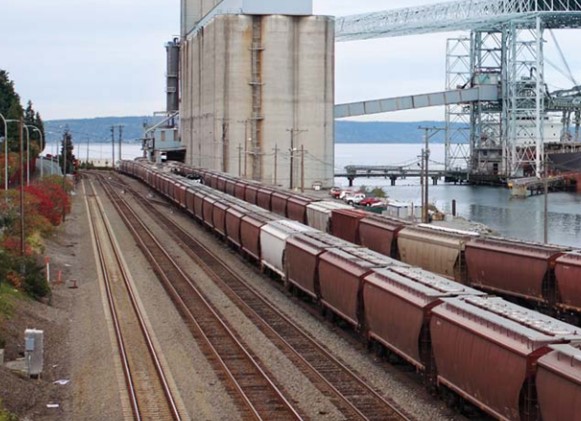Fri, 14 Oct 2022 08:38:01 CDT

Rail labor negotiations hit a speed bump Monday when it was announced the Brotherhood of Maintenance of Way Employees Division (BMWED), a division of the International Brotherhood of Teamsters and the third-largest union representing rail workers, has rejected the Sept.15 tentative labor agreement reached among the National Carriers’ Conference Committee (NCCC) and representing the Class I railroads and 12 rail worker labor unions.
After reaching the tentative labor agreement, each union is now required to have its membership ratify the deal. The ratification timeline for each union is different, with votes occurring from late Sept. to mid-Nov. During the BMWED ratification vote, 56% of the membership opposed ratification. As per the previous tentative labor agreement terms, both parties must maintain status quo for now—meaning BMWED workers will not strike nor will the railroads lock them out before a period of continued negotiation. BMWED will go back to the bargaining table with the NCCC until mid-Nov. in an attempt to reach a new agreement.
If even one union does not reach a labor agreement, it is possible that all 12 unions will strike in solidarity. To date, four of the 11 other railroad worker unions have voted in favor of ratification, albeit with narrow vote margins. Seven unions are yet to vote. If a deal is not ratified by all 12 unions, per the tentative agreement reached in Sept., Congress will be provided a window to act and prevent a potential stoppage.
Ag Supply Chain Disruptions Looming
This rail development comes as a great concern to the U.S. soy industry and agricultural supply chain. As realized last month, neither the trucking nor barge industry has the capacity to backfill the level of demand that would be needed if a rail stoppage occurs. The rail stoppage threat last month led to barge freight rates for grain reaching seasonal highs compared to previous years. Now, ongoing drought has resulted in barges coming to a halt on the lower Mississippi River. The barge and towing industry continue to institute a 25-barge maximum tow size south of St. Louis. Under normal conditions, a single tow in this region can include 30-40 barges. Since Sept. 1, 40% fewer barges have been unloaded in New Orleans. While the U.S. Army Corps of Engineers is working to mitigate some of the current barge logjam via emergency dredging, the region will need significant rainfall to reach anywhere near normal levels of service.
Low water levels are causing rates to skyrocket for both barge and rail: This, paired with rail service uncertainty, could be catastrophic. The 2022 harvest is in full effect, and growers remain dependent on a reliable transportation system to get their soybeans and other crops from field to market. According to Mike Steenhoek, executive director of the Soy Transportation Council, 80% of soybean exports occur between the months of Sept. and Feb.
On the rail side of the supply chain, as unions work through the ratification process, ASA continues to share data related to U.S. soy’s reliance on rail service with interested parties in Congress and the administration. Additionally, ASA remains in communication with coalitions and other agricultural commodity groups focusing on this issue to coordinate on next steps should congressional action be needed.

















